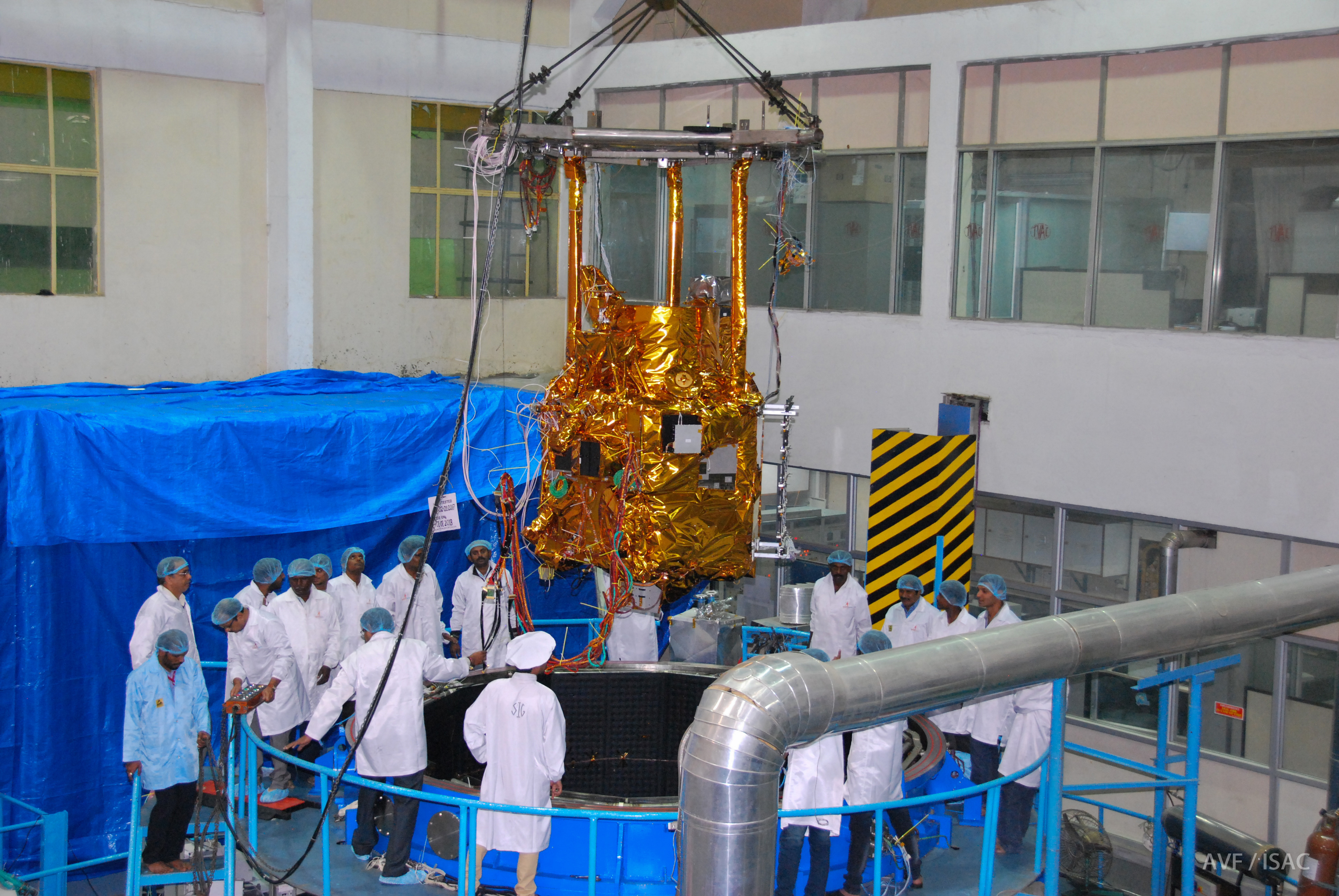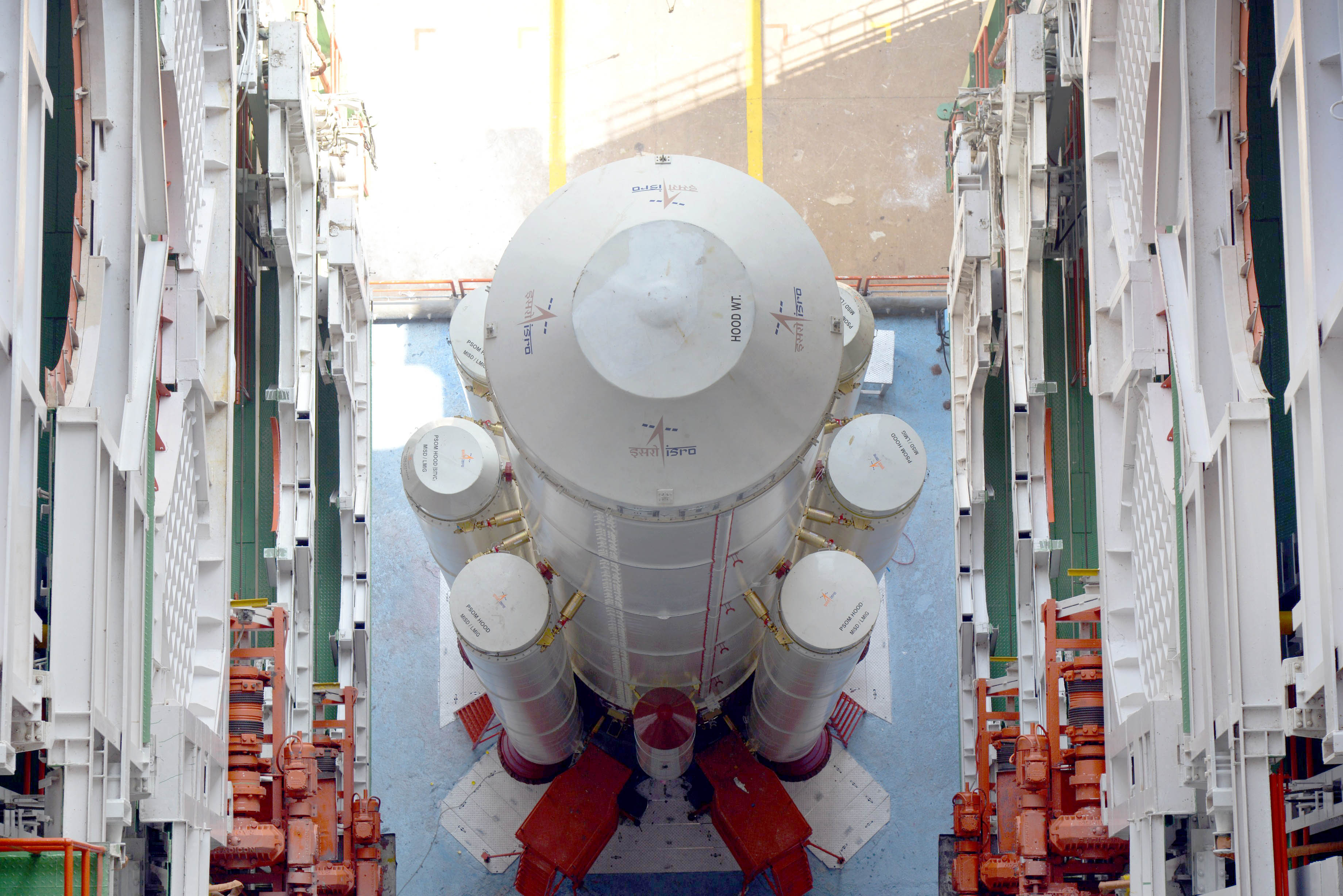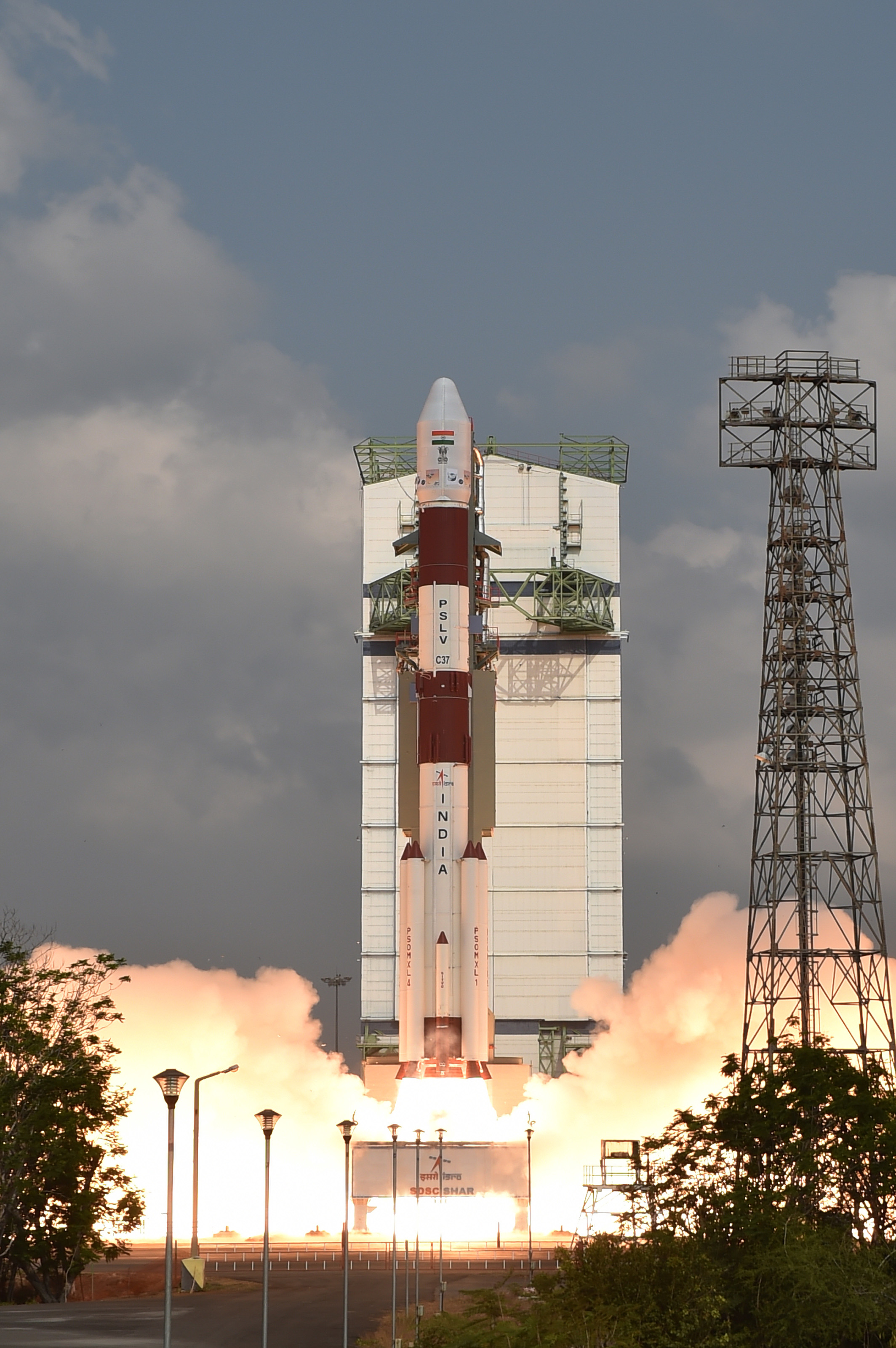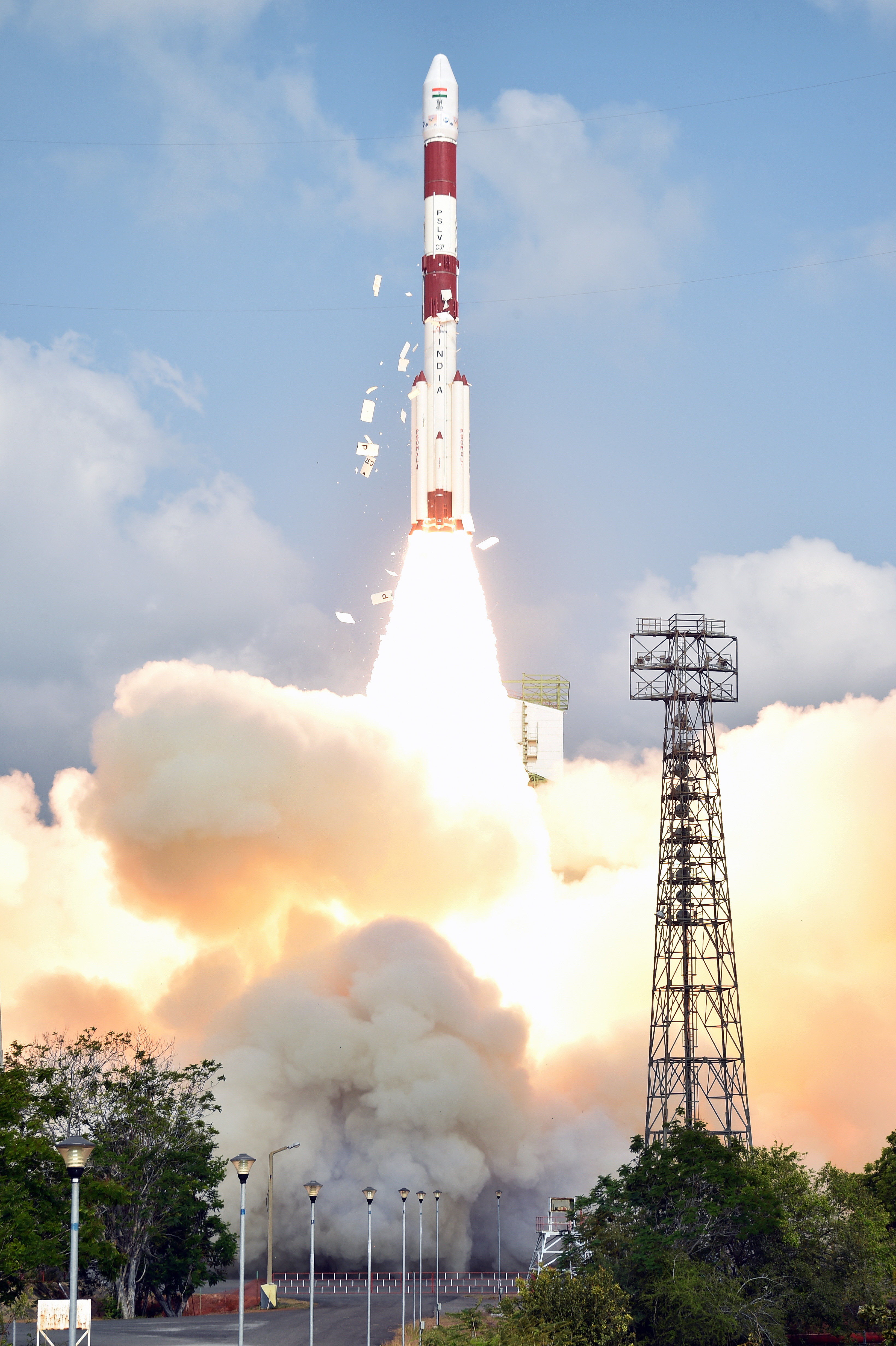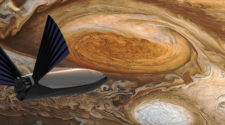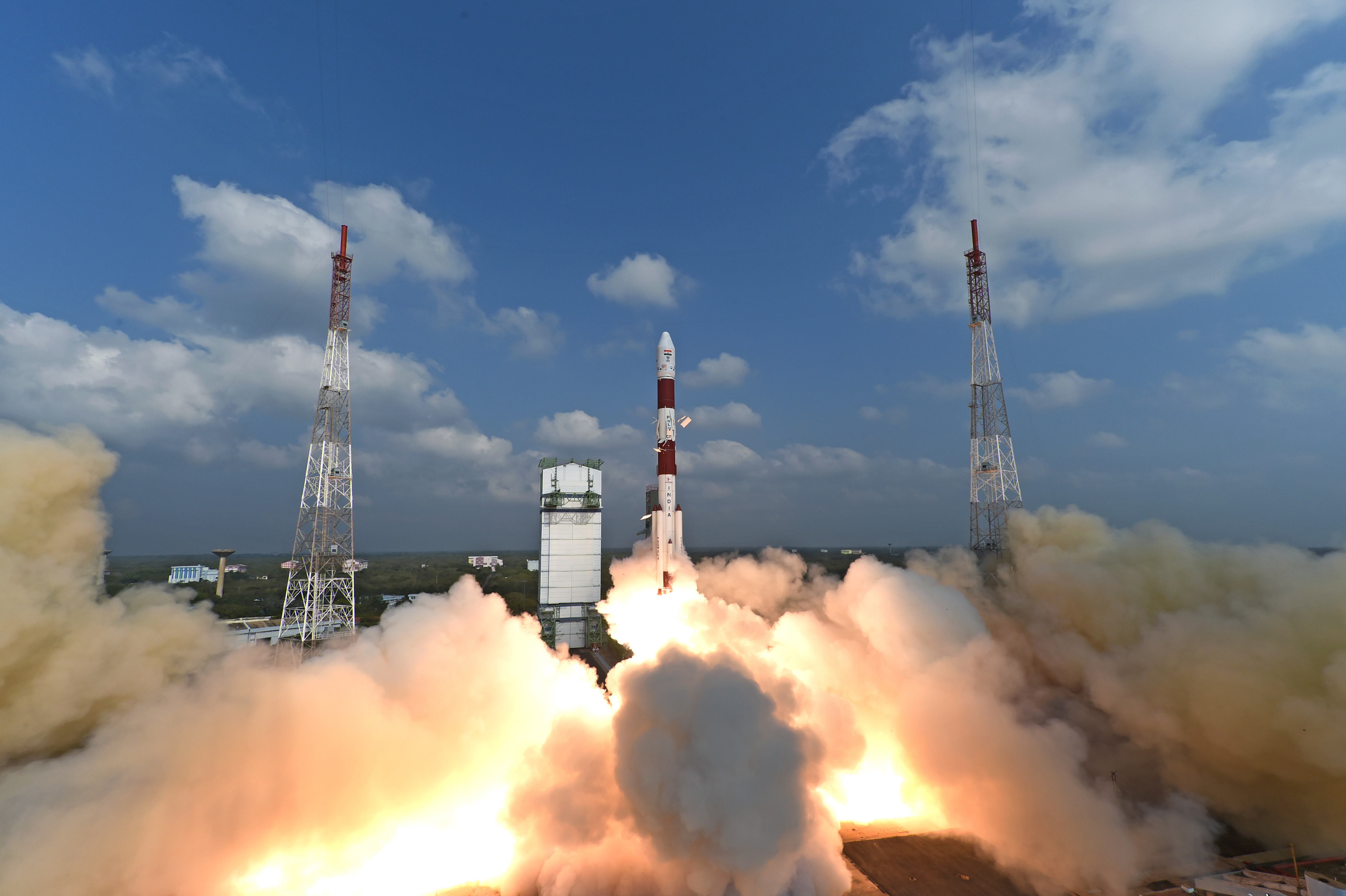
In a record-breaking flight, ISRO’s Polar Satellite Launch Vehicle (PSLV) successfully orbited the 714 kg Cartosat-2 Series satellite along with 103 co-passenger satellites on February 15 from the Satish Dhawan Space Centre in Sriharikota, India.
PSLV-C37 lifted off at 9:28 am IST, as planned, from the First Launch Pad. After a flight of 16 minutes 48 seconds, the satellites achieved a polar Sun synchronous orbit of 506 km inclined at an angle of 97.46 degrees to the equator. In the succeeding 12 minutes, all 104 satellites successfully separated from the PSLV fourth stage in a predetermined sequence beginning with Cartosat-2 series satellite, followed by INS-1 and INS-2.
After separation, the two solar arrays of Cartosat-2 series satellite were deployed automatically and ISRO’s Telemetry, Tracking and Command Network at Bangalore took over the control of the satellite. The satellite will be brought to its final operational configuration following which it will begin to provide remote sensing services using its panchromatic (black and white) and multispectral (colour) cameras.
The co-passenger satellites comprised of 101 nano satellites, one each from Kazakhstan, Israel, Netherlands, Switzerland, United Arab Emirates (UAE) and 96 from the United States, as well as two nano satellites from India.
Among the 96 American satellites were 88 Dove satellites from Planet, a San Francisco based imaging company. It was the 15th launch of Dove satellites, which comprise the largest private satellite constellation in history, totalling 149 satellites.
PSLV-C37 also carried two ISRO Nano satellites (INS-1A and INS-1B), as co-passenger satellites. These two satellites carry a total of four different payloads from Space Applications Centre (SAC) and Laboratory for Electro Optics Systems (LEOS) of ISRO for conducting various experiments.
This was the sixteenth flight of PSLV in the ‘XL’ configuration which includes the use of solid strap-on motors. The total weight of the 104 satellites carried on-board PSLV-C37 was 1378 kg (3038 lb).
